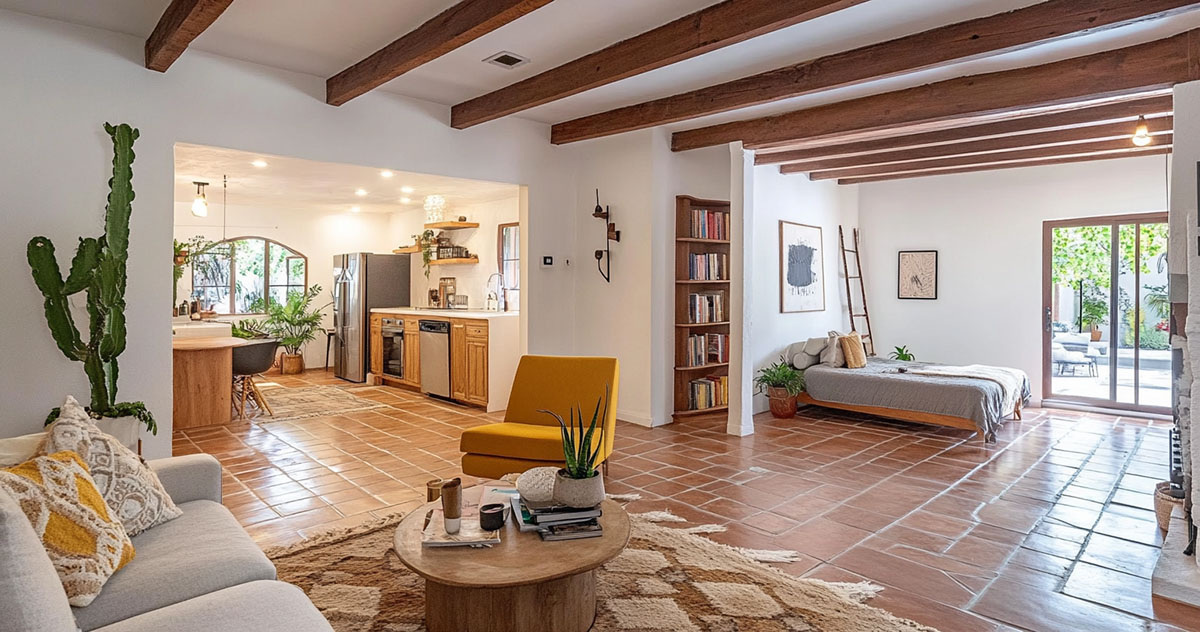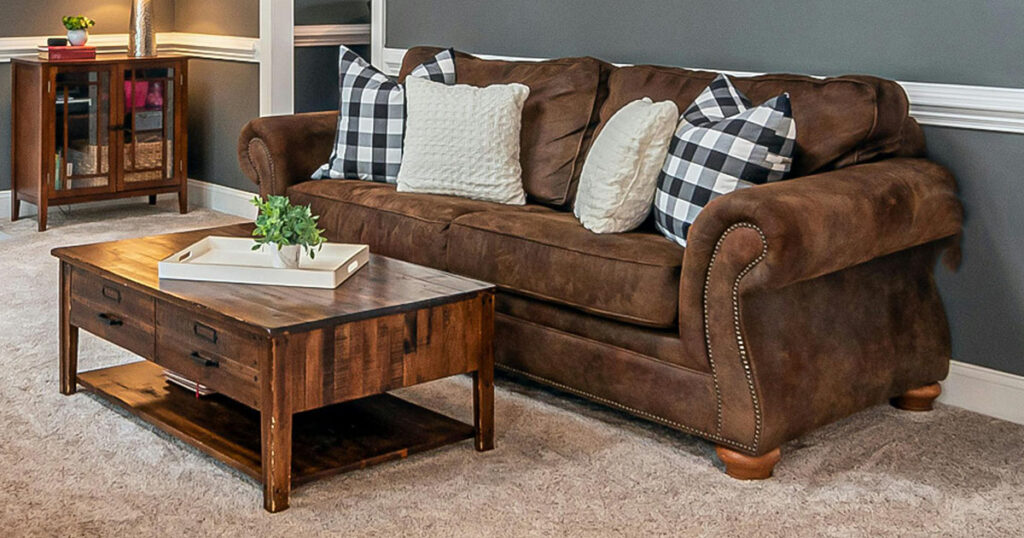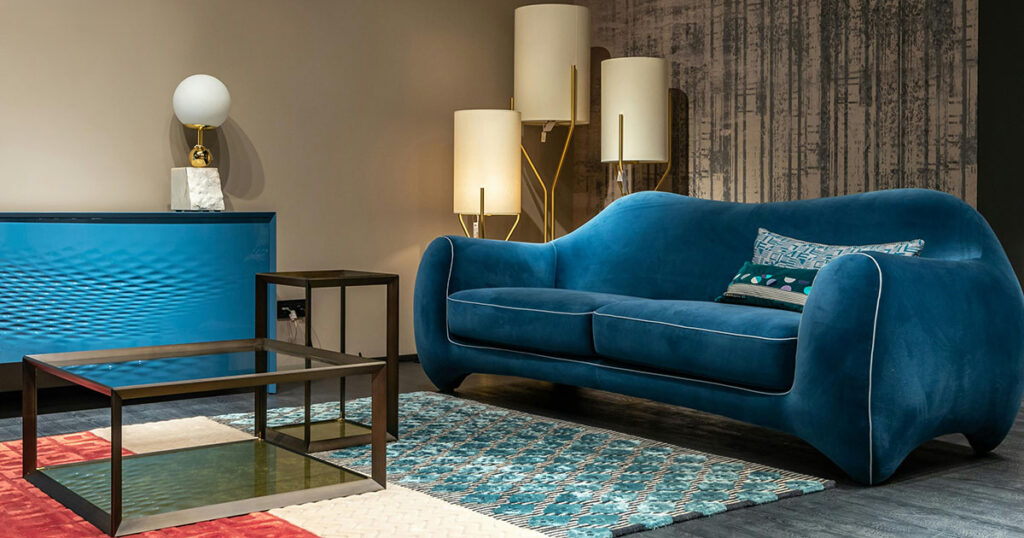Discover how to enhance your home with Mediterranean-style rugs.
In this post, you’ll learn about selecting colors, patterns, and materials that embody the Mediterranean aesthetic.
We’ll explore different types of rugs and how to place them for maximum impact.
Get tips on coordinating rugs with your existing decor to create a cohesive look.
Ready to transform your home with Mediterranean elegance?
Let’s dive in.
Introduction
Discover the warmth and charm of Mediterranean-style rugs.
These versatile floor coverings are essential for achieving the inviting ambiance of Mediterranean interiors.
In this comprehensive guide, we’ll explore the key characteristics, materials, and patterns of these rugs, as well as provide expert tips on selecting, styling, and maintaining them.
What are Mediterranean-Style Rugs?
Definition and key characteristics
- Rugs that embody the essence of Mediterranean design
- Often feature earthy colors, geometric patterns, and natural materials
Common materials
- Wool: durable, soft, and naturally stain-resistant
- Cotton: lightweight, easy to clean, and affordable
- Natural fibers (jute, sisal, seagrass): textural, casual, great for high-traffic areas
Typical colors and patterns
- Earthy, muted tones: terracotta, olive green, ocean blue
- Geometric and tribal patterns
- Botanical and floral motifs
Types of Rugs for Mediterranean Interiors
Flatweave rugs (kilims, dhurries)
- Thin, lightweight rugs without a pile
- Often feature geometric patterns and vibrant colors
- Ideal for layering or in high-traffic areas
Pile rugs (hand-knotted, tufted)
- Thicker rugs with a soft, plush surface
- Can feature intricate designs and a variety of materials
- Provides a luxurious feel and added comfort
Natural fiber rugs (jute, sisal, seagrass)
- Made from sustainable, plant-based materials
- Offer a casual, rustic look and unique texture
- Durable and well-suited for high-traffic areas
Vintage and antique rugs
- Add a sense of history and character to a space
- Often feature faded colors and worn patterns for a lived-in look
- Can serve as a focal point or conversation piece
Choosing the Right Colors and Patterns
Earthy, muted tones (terracotta, olive green, ocean blue)
- Reflect the natural colors found in the Mediterranean landscape
- Create a calming, serene atmosphere
- Complement the neutral backdrop of Mediterranean-style homes
Geometric and tribal patterns
- Inspired by traditional Mediterranean textiles and tilework
- Add visual interest and a sense of cultural authenticity
- Work well with the simple, rustic furnishings of Mediterranean interiors
Botanical and floral motifs
- Bring a touch of nature indoors
- Soften the look of heavy, rustic furniture
- Can be subtle or bold, depending on the overall design scheme
Solid, textured rugs
- Provide a neutral foundation for layering patterns and colors
- Highlight the natural materials and textures of Mediterranean design
- Work well in minimalist or contemporary Mediterranean spaces
Rug Placement in Mediterranean-Style Rooms
Living room: under seating areas, layered
- Place a large rug under the main seating area to define the space
- Layer smaller rugs on top for added texture and visual interest
- Leave enough rug space around furniture for a balanced look
Dining room: under table, extending beyond chairs
- Choose a rug large enough to accommodate the dining table and chairs
- Ensure the rug extends at least 24 inches beyond the table on all sides
- Protects floors and reduces noise during meals
Bedroom: under bed, layered with smaller rugs
- Place a large rug under the bed, with equal amounts of rug on each side
- Layer smaller rugs beside the bed or at the foot for added comfort
- Consider a plush pile rug for a cozy, luxurious feel
Entryway and hallways: runners
- Use runner rugs to guide traffic and protect high-traffic areas
- Choose durable materials like wool or natural fibers
- Opt for patterns and colors that complement the adjacent rooms
Styling Tips for Mediterranean Rugs
Layer rugs for added depth and interest
- Combine rugs of different sizes, textures, and patterns
- Ensure the colors and styles complement each other
- Start with a larger, neutral rug as a base and build from there
Mix patterns and textures
- Pair geometric rugs with floral or botanical accents
- Combine smooth and rough textures for a tactile experience
- Balance bold patterns with solid, textured rugs
Coordinate rug colors with other textiles (pillows, curtains)
- Choose rugs that share colors with other soft furnishings
- Create a cohesive look by repeating colors and patterns throughout the space
- Use the rug as a starting point for your color scheme
Use rugs to define separate spaces in open floor plans
- Place rugs under seating areas, dining tables, and beds to create distinct zones
- Choose rugs that complement each other and maintain a consistent style
- Use rugs to guide traffic and create visual flow between spaces
Comparing Mediterranean Rugs to Other Styles
Mediterranean vs. Bohemian rugs
- Both styles feature vibrant colors and patterns
- Bohemian rugs often incorporate more eclectic, global influences
- Mediterranean rugs tend to have a more refined, traditional look
- Mediterranean vs. Coastal rugs
- Both styles draw inspiration from the sea and natural surroundings
- Coastal rugs often feature lighter, more muted colors and nautical motifs
- Mediterranean rugs incorporate bolder colors and cultural patterns
Mediterranean vs. Traditional Persian rugs
- Both styles have a rich history and cultural significance
- Persian rugs often feature more intricate, detailed designs
- Mediterranean rugs tend to have a more relaxed, rustic appearance
Rug Materials and Durability
Wool: durable, soft, naturally stain-resistant
- Ideal for high-traffic areas and homes with children or pets
- Naturally resistant to dirt, dust, and stains
- Can last for decades with proper care and maintenance
Cotton: lightweight, easy to clean, affordable
- Perfect for low-traffic areas or layering with other rugs
- Easy to clean and maintain, often machine-washable
- More affordable than wool, but less durable
Natural fibers: textural, casual, great for high-traffic areas
- Jute, sisal, and seagrass are all durable and long-lasting
- Offer a unique texture and natural appearance
- Ideal for high-traffic areas, but can be rough underfoot
Considerations for high-traffic vs. low-traffic areas
- Choose durable materials like wool or natural fibers for high-traffic areas
- Opt for softer, more plush rugs in low-traffic areas like bedrooms
- Consider the level of maintenance required for each material
Where to Buy Mediterranean-Style Rugs
Online retailers and marketplaces
- Offer a wide selection of styles, sizes, and price points
- Allow for easy comparison shopping and customer reviews
- May provide free shipping and returns for convenience
Local home decor and furniture stores
- Offer the opportunity to see and feel rugs in person before purchasing
- May have knowledgeable sales staff to assist with selection and care
- Support local businesses and may offer unique, curated selections
Specialty rug stores
- Focus exclusively on rugs, offering a wide range of styles and expertise
- May have higher-end, handcrafted, or one-of-a-kind pieces
- Provide personalized service and customization options
Vintage and antique shops
- Offer unique, character-rich rugs with a history and patina
- May require more searching and patience to find the perfect piece
- Provide an opportunity to own a one-of-a-kind, statement rug
Conclusion
Mediterranean-style rugs offer a beautiful and practical way to enhance the comfort and visual appeal of your home.
By understanding the key features, placement strategies, and care requirements of these rugs, you can confidently choose the perfect pieces for your space.
Embrace the Mediterranean lifestyle with a stunning rug from our collection.




